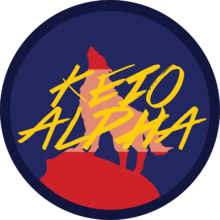Keio Alpha

Keio Alpha is a student design team formed by a group of postgraduate students from Graduate School of System Design and Management, Keio University, Japan. In July 2015, the team accepted an invitation from Elon Musk to submit design entries for an open-source pod that would advance Hyperloop technology development, in the Space X-sponsored Hyperloop pod competition.
The team was founded by David Chew Vee Kuan with his faculty advisor, Prof Yoshiaki Ohkami, to build a team of four students to submit a preliminary design to SpaceX for review.[1] The team proposed the vision of Hyperloop System in connecting satellite cities with major cities of distance more than 500km but able to travel at speed of plane and at the convenience of a train. People able to move from the place they live and the place they work where could be 500km apart but only 30minutes away. The team proposed a pod design using Magnetic Levitation, Light Vacuum Tolerant Vehicle System, Magnetic Brake System and Safety System Architecture in their design proposal. Following review of the high-level design, the team was invited to the Design Weekend at Texas A&M University on 29-30 January 2016 to present their ideas and design to panel of judges along with other 120 teams.[2] Keio Alpha Hyperloop Team was selected as one of the 30 finalist teams to build, and then race, their pod in the prototype vacuum tube test track adjacent to Space X Headquarters at Hawthorne, (Los Angeles) California, USA.[3][4]
As of March 2016, Team Keio Alpha is now on detail designing the components, subsystem and then building their competition ready-pod. Due the limitation of logistics and budget, Keio Alpha will be building a micro-pod which does not need to carry dummy passenger and have a aerodynamic shell like what other teams will have. The micro-pod will consist only the necessary system to propel the pod as fast as possible for the distance of 1.5km track and stop safely at the end of the track. This is the main objective of the Competition Weekend in Los Angeles in August 2016. The design will feature both active and passive magnetic levitation systems. The pod is being designed to achieve top speed of 360 kilometers per hour (220 mph), acceleration of 2 standard gravities (20 m/s2) by an external propulsion system. The braking system is a passive eddy current braking which is designed to have 1.5 standard gravities (15 m/s2) deceleration capabilities.
Team membership expanded from four to ten engineering, design and business students from February 2016 onwards to support this project. The team members come from various nationalities: Malaysia, Thailand, China, Japan, Indonesia and Mexico. Many other faculty members and industry experts supported Team Keio Alpha with funding and expertise advice to complete the manufacturing of the high speed pod by students. Keio Alpha is the only remaining team from Asia to participate in phase 2 of the Hyperloop pod competition. [5]
References
- ↑ Thompson, Cadie. "More than 300 teams have a chance to win Elon Musk's Hyperloop pod contest". TECHINSIDER. Retrieved 1 April 2016.
- ↑ "Design Weekend Teams". Texas A&M University Hyperloop Team. Retrieved 1 April 2016.
- ↑ Hawkins, Andrew J. (30 January 2016). "MIT wins SpaceX's Hyperloop competition, and Elon Musk made a cameo". The Verge. Retrieved 31 January 2016.
- ↑ Klein, JoAnna (3 February 2016). "Eight New Teams Added to Hyperloop Competition This Summer". Inverse. Retrieved 15 February 2016.
- ↑ "Awards". Texas A&M University Hyperloop Team. Retrieved 1 April 2016.